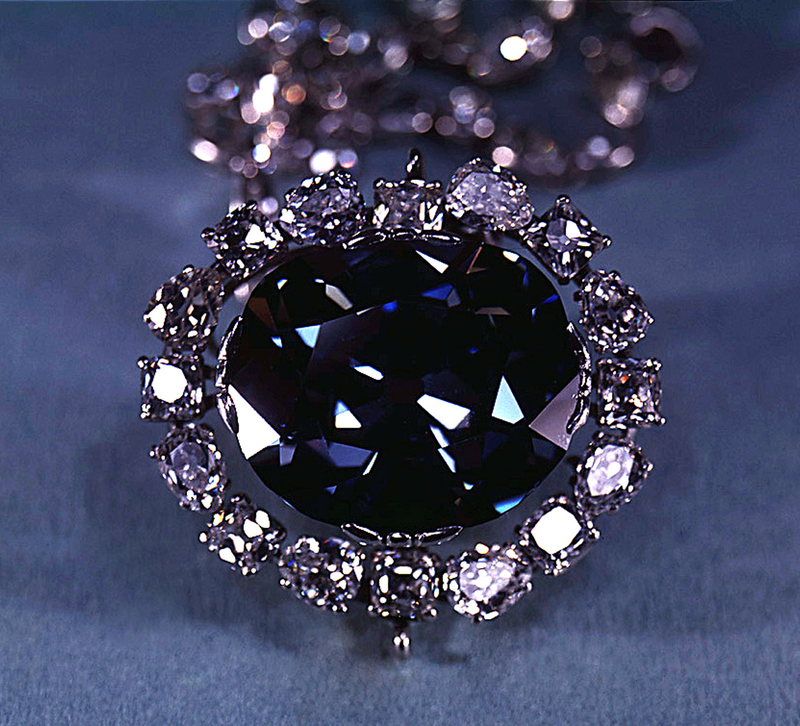The History of the Hope Diamond and its Relation to Bar Harbor – Part VII
published march 27, 2024 | written by emily cough | edited by BHHS staff

Part 7 – From Debt to Hope
Following the Great London Exhibition in 1851 and the death of Henry Thomas Hope in 1862, the blue diamond and other assets in his testament were left exclusively to his widow, Anne.
Upon Anne’s own death in 1884, she bestowed upon her grandson, Lord Francis Hope, the inheritance of her properties, titles, and assets, including the famed Hope Diamond—rather than her daughter, Henrietta.
Henrietta’s husband, Henry Pelham-Clinton, known as Linky, was regarded as a spendthrift and reckless in his spending habits, which caused Anne to believe that he would gamble the family’s wealth away and bring financial ruin upon them. In the eyes of Queen Victoria, Linky was deemed “worthless”; a liar and a drunk (Kurin, 2017). Anne’s decision to leave her fortune to her grandson aimed to solidify their control over the Hope wealth by designating him and future generations as “tenants for life,” which “meant that the Hope estates and heirlooms, legally defined as such, could not be easily sold off” (Kurin, 2017).
Nonetheless, Anne’s fears still found some validation. At 21, Lord Francis inherited his grandmother’s fortune; whether influenced by his father’s exploits or overwhelmed by the sudden influx of wealth, Lord Francis quickly burned through a substantial portion of his riches, plunging himself into a litany of debt.
His imprudent financial decision making was further exacerbated by his union with May Yohé, a stage performer, in 1894. Their union caught them in a web of dissaving and poor decision making, despite the substantial income generated by the Hope estates, which exceeded $80,000 annually by 1893 (equivalent to roughly $2.7 million in today’s dollar) (Patch, 1999). In a bid to alleviate his growing debts, Lord Francis planned to liquidate a portion of the Hope collection of artworks. However, due to the stipulations in his grandmother’s will, this was easily contested by his three sisters and brother, who were averse to the idea of splitting up the family fortune, let alone the cherished artworks.
By 1895, Lord Francis faced complete bankruptcy. Although his spouse May experienced success on the stage, allowing them to emerge from bankruptcy by 1896, Lord Francis remained ensnared in a dire financial situation, confronted with a “sinking fund” amounting to nearly $10 million in today’s currency (Patch, 1999). It wasn’t until 1898 that Lord Francis managed to sell the selection of paintings, following the withdrawal of opposition from his siblings. Regrettably for Lord Francis, the proceeds from the sale fell short of expectations, amounting to just under $6 million in today’s dollars, leaving him still with a hefty debt.
Losing Hope
Still reeling under the weight of substantial debt, Lord Francis could think of only one way to alleviate his financial troubles: to sell the Hope Diamond.
It wasn’t until 1902, coinciding with his divorce from his wife May, that Lord Francis, finally given the permission of his siblings, was able to succeed in liquidating the gem to recover his assets.
Gem authority and sister to Gloria Steinem, Susanne Steinem Patch, notes that “although the diamond’s rumored sale price reached $250,000 [equivalent to $9 million in today’s dollars], the value given on the invoice, on which a 10 percent customs duty was paid, was $141,032” (equivalent to $5.1 million today) (Patch, 1999).The new owner of the Hope Diamond then became Adolph Weil, a diamond merchant based in London, who subsequently transferred ownership to Simon Frankel of New York City. Bringing the diamond onboard the Kronprinz Wilhelm (sound familiar?), the blue gem was now across the pond, where it has remained, for the most part, since.
References
Kurin, Richard. 2017. Hope Diamond: The Legendary History of a Cursed Gem. Smithsonian Institution.
Patch, Susanne Steinem. 1999. Blue Mystery: The Story of the Hope Diamond. Abradale Press.
